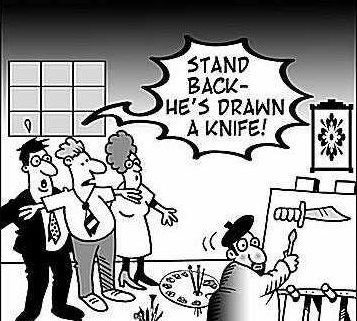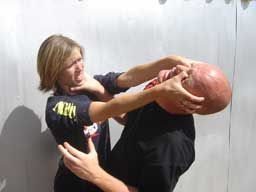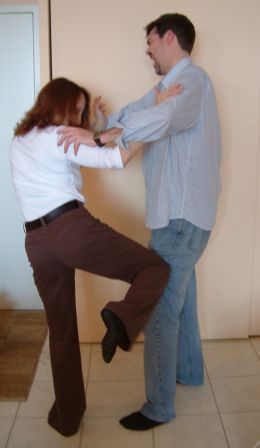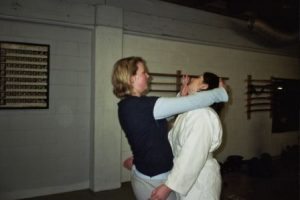1-Plus Rule: Are Police Officers Supposed To Fight Fair?
Officer Smiley Face is on foot patrol in the East Side, where the rowdiest of all bars are located. The East Side is well known for its drug traffic and gang activity, and there’s been a number of assaults on police officers in recent weeks. So Officer S. Face is on high alert as he passes a suspicious young man hanging out at the corner of Kick and My Butt. He exchanges eye contact with him. The guy mumbles a few words to himself and then falls in step behind the officer after he passes.
Officer Face moves to the side of the walkway and turns his back to the brick storefront of Slim’s House of Pawn and Porn. The man stops in front of him. Then, without warning, he jumps the officer, delivering punches and kicks to his face and body.
Is Officer Smiley Face expected, by law, to fight a fair fight? Must he stand there and exchange punches and kicks with the thug until the best fighter is left standing? Of course not. Police officers are expected to win every single encounter. They should never lose a battle. Never. Their goal is arrest all suspects and bring them in to stand trial.
But, the attacker is bigger and stronger… There’s more than one attacker…. He’s a better fighter…
And those are the reasons officers operate under the “1-Plus Rule,” which simply means officers, under normal circumstances, are allowed to use one level of force above the amount of force used by the suspect/attacker/adversary—the suspect waves a knife, so officers draw their firearms.
But what about an encounter such as the one Officer Smiley was faced with in the paragraphs above? The man was unarmed and he began his attack at close range. What is Officer Face allowed to do to defend himself?
Well, if the officer feels that his life is in danger he is permitted to use deadly force, but in this case he probably wouldn’t have the time or means to get to a weapon. Not at first, anyway.
So here are some options officers may want to consider when faced with deadly force encounters while empty handed.
Eye Gouge – Use your palms to guide the thumbs to the eyes, and always use the thumbs when applying this technique. Never a finger. Thumbs are capable of delivering more force than fingers. Besides, fingers break easily as opposed to the sturdier thumbs. But you can use the fingers to grip the head, which helps to provide even more force from the thumbs. A properly applied eye gouge almost always results in the suspect releasing his grip on you.
Knee Strike – A knee strike to the head, groin, or gut can be a devastating blow. A huge amount of force is generated by this technique, and that force translates into lots of pain for your attacker.
The Head Twist – This one’s a little tricky because you could actually kill your suspect if you’re not careful. BUT, if the officer is fighting for her life, then so be it.
Kick To The Knee – It’s very easy to break a knee, therefore a good kick to it can put your attacker out of commission in a hurry. After all, it’s tough to fight while standing on one leg. It’s also difficult to escape custody with a broken knee. Not many suspects are able to successfully hop to freedom.
Palm-Heel Strike To The Ear – This one is quite painful. Makes ’em see stars and bright white lights. It’ll also make them release the choke hold they have on you.
Remember, these are NOT the techniques used to control suspects—arm bars, wrist locks, and come-alongs. These are techniques used when fighting for survival—empty-hand deadly force tactics.
position: absolute; opacity: 1; z-index: 8675309; display: none; cursor: pointer; top: 1582px; left: 20px;”>Save










The very first defensive move I thought of was the Strike to the Ear. Just thinking about it makes me hurt.
When I was an EMT, we had a rule called the “Plus One Rule”, which was slightly different. It meant that if we found a weapon on a patient, we should consider that one and assume that there’s another one (“plus one”) and never let our guard down.